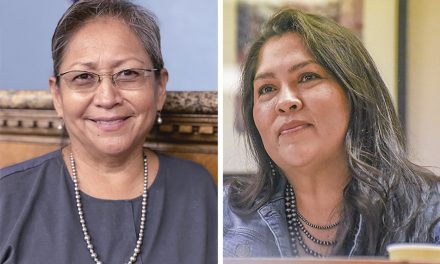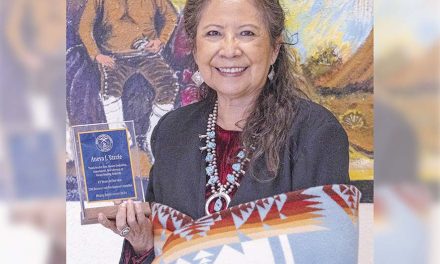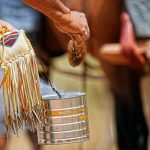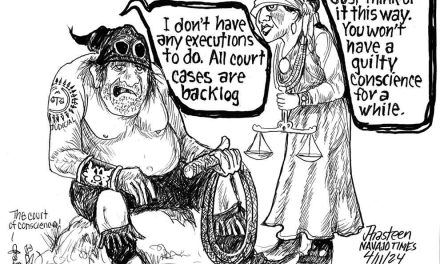
50 Years Ago: Chapters ask Council to take action on wild dog problem
Dogs – you either loved them or hated them and, in 1971, a lot of reservation residents were turning into dog haters.
Several chapters, including St. Michaels and Shiprock, had passed resolutions begging members of the Navajo Tribal Council to do something about the wild dog population.
Almost every chapter on the reservation reported having problems with wild dog packs that constantly roamed outside of practically every community on the reservation.
The St. Michaels Chapter resolution said residents of that area have seen dog packs with as many as 25 dogs roaming on the outskirts of Window Rock in the mornings looking for food. Dog attacks have also been increasing as the packs have become more violent if confronted by police or residents.
What is making the problem worse, said the resolution, was that people living off the reservation would drop off unwanted dogs, most of whom would be savagely attacked by the dog packs.
While this worked to keep the wild dog population from growing even more, it was viewed as cruel punishment for dogs whose owners had no more use for them.
The wild dog problem still was getting worse according to the Navajo Area Indian Health Service which had put the problem second on their list of major concerns, behind alcohol abuse.
The problem was made worse in 1971 by the fact that the tribe had no dog control program and no regulations to address the problem. The tribal Council in 1969 had passed a resolution creating a dog enforcement unit within the tribal Fish and Wildlife Department but the resolution provided no funding to actually create such a department.
The Council, in 1969, envisioned the creation of a dog tax to be paid by dog owners on the reservation. By having dog owners pay a $5 dollar a year fee, enough money would be generated to fund the department. The Council did not take into consideration the question of who would collect the payment and what punishment would be imposed on those who refused to pay the annual fee.
Two years later, with complaints about the lack of dog control on the rise, the Council’s Advisory Committee decided to solve the problem, not by trying to find funds to create a dog control program but by directing the tribe’s Fish and Wildlife Department to do a study to determine how big the dog control department should be.
Ads for beer
Speaking of problems that needed to be addressed, there was one that was causing a little concern within the management of the Navajo Times.
Chet MacRorie, the paper’s publisher, informed its readers of a movement by some staff members over the company’s policy to accept ads from supermarkets advertising the sale of beer.
Given the fact that laws prohibit reservation residents from bringing alcoholic beverages on the reservation, they viewed as wrong accepting ads promoting the sale of alcoholic beverages.
There were no tribal laws prohibiting the paper from taking liquor ads and MacRorie knew imposing such a restriction would cause the paper to lose revenue.
Supermarkets used reduced beer prices to entice shoppers to do their weekly shopping with them but a prohibition to advertise beer sales would just require them to find something else to use to attract reservation shoppers.
It was doubtful that the Council would enact such a prohibition because of an outcry from chapters who relied on contributions from beer distributors to pay for newspaper ads promoting their rodeos. The beer distributors expected to have their logo in the rodeo ads.
The tribe even took advantage of this oddity because the beer distributors could be depended upon to help sponsor the annual tribal fair and Fourth of July celebration.
MacRorie admitted to his staff that accepting beer ads while printing articles on the evils of drinking beer was hypocritical, but the paper could not afford taking the high road, at least not at that time.
Summer youth program
The tribe’s summer youth program went into effect this week and several hundred Navajos enrolled in college were hired to work in chapters or tribal programs for six weeks.
Chairman Peter MacDonald made sure the program had all the funds it needed because he felt it could be used to promote his future efforts to get re-elected. So he made sure that his staff used the opportunity to show what the administration was doing.
MacDonald by then was looking at the possibility of creating a youth council to give college students a chance to get involved, at least on an advisory level, in the tribal government. That program would eventually become a reality.







 Highway 264,
Highway 264, I-40, WB @ Winslow
I-40, WB @ Winslow